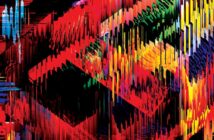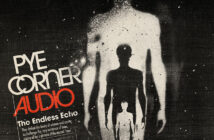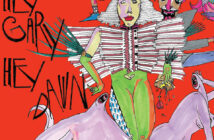
In the 1920s, when the radio was starting to become popular, people believed they heard ghosts in its static, voices of long lost relatives netted by electromagnetic waves and made physical again by the machine. In 1952, when John Cage premiered 4’33”, it became suddenly obvious to those that listened that sound was everywhere – silence was a myth. In the 1960s and “70s, before digital took over, analogue sound would warp and buckle sometimes, victim to its own physicality, organic in its inefficiency.
This is the history that informs Perforate Silence by Christopher Delaurenti. Delaurenti is a sound artist in the Cagean tradition. His focus is on making the inaudible audible and on discovering sound in unexpected spaces. The opening track, “audio found in the silent 8mm home movies of the Ring family’, is the suitably ghostly mutterings of electromagnetic impulses created by dubbing old 8mm home movies onto VHS. Following this, “the mute right channel of Lionel Marchetti’ Train de Nuit’s (as described, audio from the ostensibly mute right ear of Marchetti’ mono 2002 CD) voices its accidental digital artefacts. The final track of the CD, “Remote’, is an improvisation performed by flicking between TV channels using an outdated 1980′ remote to create a pop-cultural tomography of stuttering TV themes and dialogue.
The experiments on Perforate Silence create a shift from the normal position of composer as “creator’ and “arranger’ of sounds to composer as “discoverer’ and ‘presenter’. Delaurenti himself refers to the pieces as co-compositions. His role is simply to present them to the listener and he does so in an incredibly raw state. The second track, for example, is more than 21 minutes long and contains more silence than it does sound. For many, even those fascinated with the texture and back-story of the sounds, the long stretches of silence will be prohibitive. In a purely conceptual sense, however, these sounds are best left in their natural state – framed and offset by silence. The pieces are, after all, not designed to dominate silence put to pattern it, to leave mere perforations.
Henry Andersen



